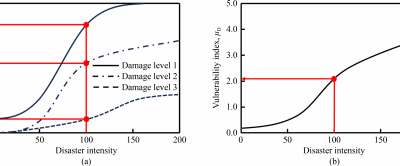Science
New Study Reveals Vulnerabilities of Shield Tunnels Under Surcharge

Urban underground engineering relies heavily on shield tunnels, particularly in metro systems. A recent study conducted by researchers from Tongji University has spotlighted the vulnerabilities of these tunnels when exposed to accidental surcharge loading—an unpredictable man-made hazard that can jeopardize their structural integrity. The research team aimed to address a significant gap in existing literature, which predominantly concentrates on seismic hazards while neglecting the implications of extreme surcharge conditions.
The study, titled “Vulnerability Analysis of Shield Tunnels Under Surcharge Loading,” introduces a comprehensive vulnerability assessment framework that evaluates the damage state of shield tunnels subjected to sudden extreme surcharges. This framework incorporates uncertainties related to soil parameters and the burial depths of the tunnels, which have often been overlooked in previous studies.
To validate the framework, the team developed a two-dimensional numerical model of shield tunnels located in soft soil, utilizing the ABAQUS software. This model was subsequently verified through field monitoring data, establishing a reliable foundation for their assessments. The researchers identified joint opening at three key locations—Joint 1 at the tunnel crown, Joint 2 at the springline, and Joint 3 at the invert—alongside horizontal convergence as critical damage indicators. Each joint’s damage state was classified into five categories: none, minor, moderate, extensive damage, and collapse.
Using Monte Carlo calculations, the researchers constructed fragility curves, which depict the likelihood of exceeding particular damage states, and vulnerability curves that represent expected damage levels. The fragility curves were accurately fitted using logistic functions, while hyperbolic tangent functions were employed for the vulnerability curves, achieving high fitting accuracy with an R² value close to 1.
Key findings emerged from their analyses of tunnels at varying depths of 8 m (shallow), 16 m (moderately deep), and 30 m (deep). The results indicated that Joint 2 exhibits the highest failure probability under the same surcharge conditions. Additionally, moderately deep tunnels demonstrated increased vulnerability when surcharge loading exceeded 50 kPa. Deep tunnels, while initially more vulnerable due to elevated soil and water pressure, showed less sensitivity to increases in surcharge.
The framework was applied to a real-world scenario involving the Shanghai Metro Line 2. This application enabled quick identification of high-risk sections, specifically rings numbered 350–390 and 550–590. The research team proposed targeted mitigation measures such as grouting and the bonding of AFRP (Aramid Fiber Reinforced Polymer) or steel plates based on the assessed vulnerability levels.
The findings of this study, authored by Zhongkai Huang, Hongwei Huang, Nianchen Zeng, and Xianda Shen, provide critical insights into the safety and operational viability of urban shield tunnels under extreme loading conditions. The full paper can be accessed at https://doi.org/10.1007/s11709-025-1193-4.
By addressing a crucial aspect of urban infrastructure resilience, this research contributes significantly to the understanding of tunnel vulnerabilities and highlights the importance of proactive measures in urban engineering practices.
-

 Technology5 months ago
Technology5 months agoDiscover the Top 10 Calorie Counting Apps of 2025
-

 Health3 months ago
Health3 months agoBella Hadid Shares Health Update After Treatment for Lyme Disease
-

 Health3 months ago
Health3 months agoErin Bates Shares Recovery Update Following Sepsis Complications
-

 Technology4 months ago
Technology4 months agoDiscover How to Reverse Image Search Using ChatGPT Effortlessly
-

 Technology1 month ago
Technology1 month agoDiscover 2025’s Top GPUs for Exceptional 4K Gaming Performance
-

 Technology3 months ago
Technology3 months agoElectric Moto Influencer Surronster Arrested in Tijuana
-

 Technology5 months ago
Technology5 months agoMeta Initiates $60B AI Data Center Expansion, Starting in Ohio
-

 Technology5 months ago
Technology5 months agoRecovering a Suspended TikTok Account: A Step-by-Step Guide
-

 Health5 months ago
Health5 months agoTested: Rab Firewall Mountain Jacket Survives Harsh Conditions
-

 Lifestyle5 months ago
Lifestyle5 months agoBelton Family Reunites After Daughter Survives Hill Country Floods
-

 Health3 months ago
Health3 months agoAnalysts Project Stronger Growth for Apple’s iPhone 17 Lineup
-

 Technology4 months ago
Technology4 months agoHarmonic Launches AI Chatbot App to Transform Mathematical Reasoning











